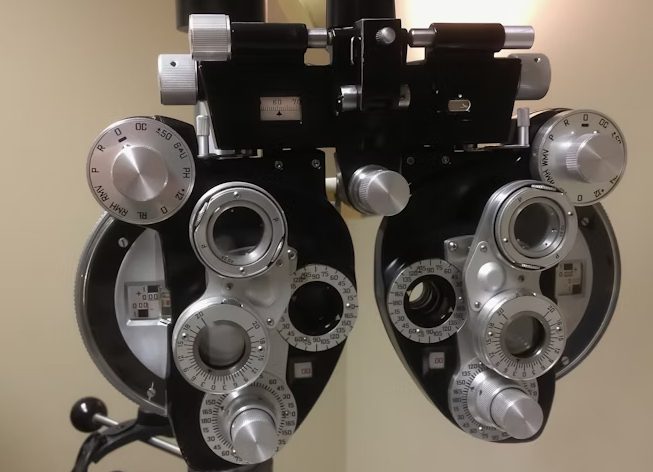
@ShahidNShah


From morning workouts to late-night city commutes, glasses and contacts can feel like constant obstacles. They fog, dry out, and require ongoing maintenance. That’s why so many people in New York City and beyond look to LASIK for a more permanent solution. The chance to wake up with clear vision and move through life without frames or lenses is a freedom many people want.
However, there have been some recent advancements. Early versions required blades and often came with a lengthy recovery. But modern LASIK combines advanced imaging with custom lasers, making treatment safer, faster, and more precise. Understanding this evolution helps you decide whether it aligns with your goals and lifestyle.
When LASIK was first introduced, surgeons used mechanical blades to create a corneal flap. While effective, this method carried higher risks of complications and often required longer healing. The arrival of femtosecond lasers changed the landscape, replacing blades with bladeless precision.
This shift dramatically improved safety and consistency, laying the foundation for the procedure as we know it today. With more accurate flaps and fewer complications, patients gained greater confidence and faster recoveries.
Along with surgical techniques, other technologies have advanced significantly, changing how LASIK is performed and how patients experience results.
Some of the most important advancements include:
Together, these advancements mean sharper vision, safer outcomes, and consistently satisfied patients. What’s more is that most top providers of LASIK New York City now merge this technology with treatment plans tailored to the patient. Dr. Tal Raviv exemplifies this approach, drawing on decades of expertise and personal involvement throughout the entire process. The result is a level of precision and confidence that early procedures simply could not match.
Another area where advancements stand out is recovery time. While early methods often required several days of downtime, today’s bladeless techniques and refined lasers make the process much quicker.
Temporary side effects like dryness, light sensitivity, or mild discomfort may appear, but they usually fade quickly. Careful aftercare, using prescribed drops, avoiding eye rubbing, and attending follow-up visits, ensures smooth healing and lasting results.
With these advancements, the pool of people who qualify has expanded. Modern techniques allow more flexibility than older methods, but certain requirements still apply.
The best candidates are:
That said, advanced imaging and bladeless flaps mean some who weren’t eligible years ago may now qualify. A detailed consultation helps determine whether LASIK is the right choice for your eyes — or if alternatives like PRK or implantable lenses would be safer.
Preparation starts weeks before surgery. Surgeons measure corneal thickness, pupil size, and refractive errors to design a precise treatment plan. Patients are usually asked to stop wearing contacts to allow accurate measurements.
On the day of surgery, you’ll be advised to avoid makeup, creams, or perfumes. Since you cannot drive immediately afterward, arrange transportation in advance. Setting aside the rest of the day to rest helps your eyes begin healing right away.
Modern LASIK is considered very safe, but no surgery is risk-free. Temporary glare, halos, or slight under-correction may occur, though these effects usually improve as the eyes heal. Rare complications like infection are far less likely when experienced providers oversee the procedure.
Alternatives remain important for those who aren’t candidates. Photorefractive keratectomy (PRK) reshapes the cornea without creating a flap. Meanwhile, implantable lenses add correction without altering corneal tissue. A good surgeon will discuss these options openly and recommend what’s safest for you.
Modern LASIK is a very different procedure from the one introduced decades ago. Blades have been replaced by femtosecond lasers, detailed imaging creates custom plans for every patient, and recovery times are shorter than ever before. These advancements mean more people can benefit safely, quickly, and with confidence.
For those in New York City, experienced surgeons like Dr. Tal Raviv at Eye Center of New York show how technology and personal care combine to deliver life-changing results. With the right provider, LASIK today doesn’t just improve vision — it redefines what freedom from glasses and contacts can feel like.

Clinical innovation now reaches everyday aesthetic care. Clinics are weaving digital tools into patient-centric planning, shifting the focus from guesswork to measured, safe outcomes. The treatment, …
Posted Sep 30, 2025 Skincare
Connecting innovation decision makers to authoritative information, institutions, people and insights.
Medigy accurately delivers healthcare and technology information, news and insight from around the world.
Medigy surfaces the world's best crowdsourced health tech offerings with social interactions and peer reviews.
© 2025 Netspective Foundation, Inc. All Rights Reserved.
Built on Dec 12, 2025 at 1:25pm